The sea and beach are in a state of constant change. Every tide, wind direction & wave re-sculpts the sand and in-turn, the changing sand modifies the breaking waves. A place that was safe can become dangerous in moments. A beach lifeguard constantly anticipates these effects and works proactively to keep people safe.
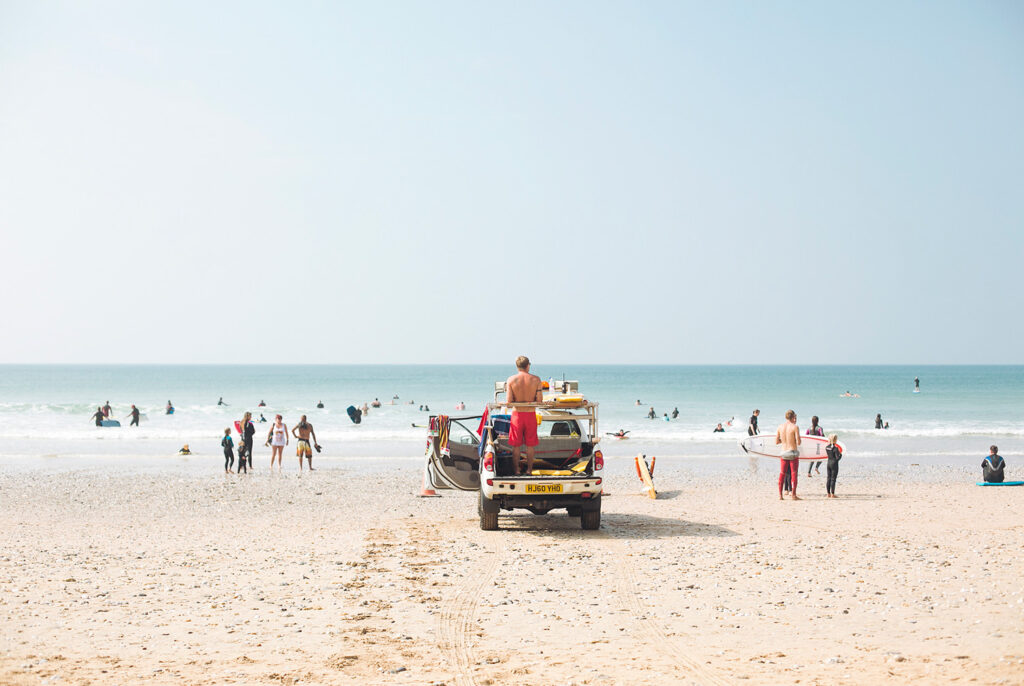
The best thing you can do to keep yourself safe is to visit a lifeguarded beach and follow the advice of lifeguards.
However, there are a few things you can learn that can help you keep yourself, and others safe in this dynamic environment. The content below is no replacement for experience or the advice of a lifeguard and is provided for information only.
In an emergency dial 999 and ask for the Coastguard.
We are fortunate to have emergency landlines at all our local beaches.
| Trevaunance Cove | Yellow 999 only phone on the external wall of the surf club building facing the road. BT telephone box in small car park. |
| Chapel Porth | Yellow 999 only phone on the external wall of the lifeguard hut. |
| Porthtowan | Yellow 999 only phone on the external wall of the surf club building facing the beach. |
| Elsewhere | Keep an eye out for emergency phones or even telephone boxes – some were left at the coast for emergency use. |
You can help the emergency services by staying calm and speaking clearly and slowly. Try to give information in sections rather than as a long narrative. If you can, try to describe: People, Position & Problem (or “Who”, “”Where”, “What”).
Tides | Wind | Waves (Size, Shape & Period) | Rips
Understanding the processes that affect our beach can be a fascinating intro to the science as well as a good way to help you stay safe. Below is a tiny intro to some of these topics and a look at the specifics for some of our local beaches.
Tide times can be forecast for years in the future. You can pick up a little yellow book from the newsagent for under £2 that will tell you the time and size of every tide for the whole year. The state of the tide completely transforms many of our beaches. For more info on tides, check out the video below.
The biggest risk from tides occurs when the tide is coming in “flooding” / “pushing”. Local surf and wind conditions can lead to this process happening in sudden jumps, rather than a steady process. Take care not to be cut-off at the base of cliffs as the water rises.
| Trevaunance Cove | Large high tides (springs) completely fill the bay with surging waves splashing the balcony at Schooners! The incoming tide creates a risk that people get cut off on Star beach and the Harbour rocks as the route back to the beach is quickly submerged. Waves tend to be larger and heavier towards lower tides. |
| Chapel Porth | On big low tides a 2 mile stretch of sand connecting with Porthtowan to the South, and on high tide the tiniest rocky cove. SEVERE RISK of tidal cut-off to both sides of the cove on an incoming tide. Beware of strong rip currents that can drag you from the cove to areas that are rapidly cut off. |
| Porthtowan | Always some sand, even on the highest tides. Like chapel, SEVERE RISK of tidal cut-off in coves to North (Flat Rocks) and South (Lushington). Be very aware of rocks on left hand side as the tide comes in. |
| Elsewhere |
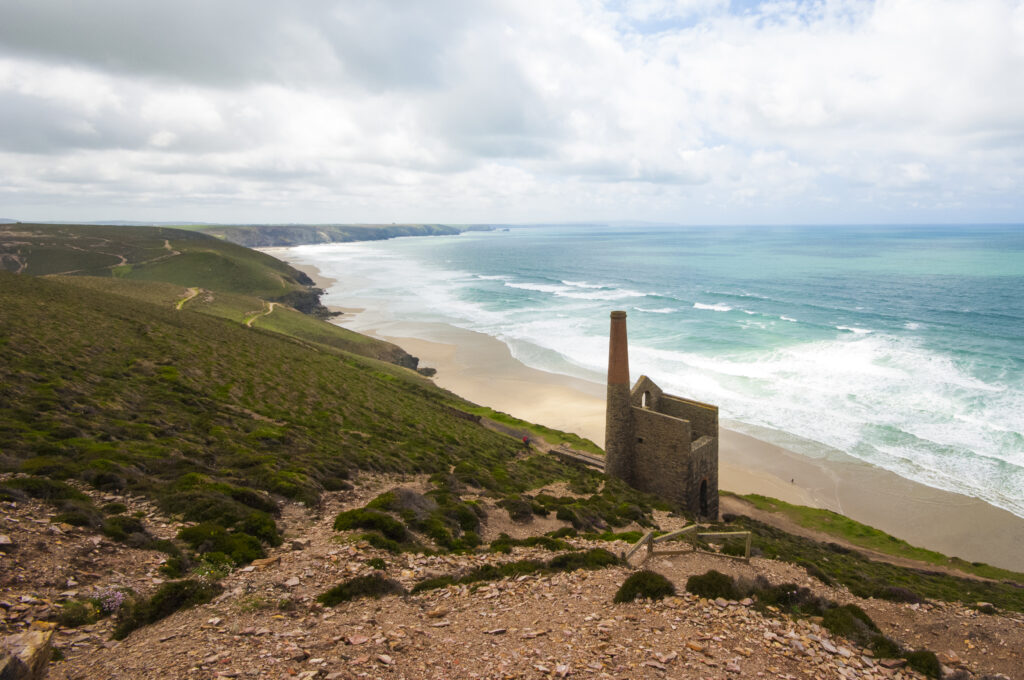
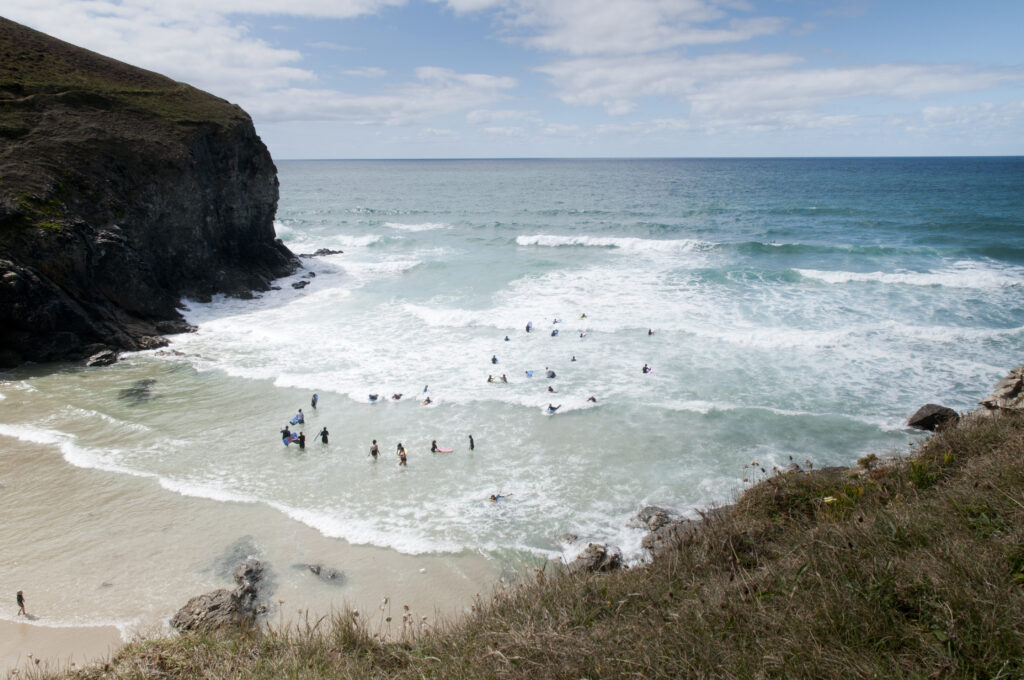
Wind blowing onshore (towards the beach) makes the sea “choppy” with lots of close together, bumpy waves. These are “baby” waves, if they had further to travel, over time they’d become organised into swell.
Wind blowing offshore creates “clean” conditions where the surface of the sea is smooth. Offshore winds can be dangerous as they tend to get stronger the further from land you travel and can blow people out to sea. High sided craft and inflatables are particularly at risk.
| Our Beaches | Faces | Notes |
| Trevauance Cove | NNW | Offshore in winds from the South. Onshore in winds from the North. Sheltered to some extent from the prevailing SW wind by high cliffs and the beacon. |
| Chapel Porth | W | Offshore in winds from the South East. Onshore in winds from the West. Very exposed! |
| Porthtowan | W | Similar to Chapel Porth but more shelter at the southern end from SW. |
| Elsewhere | ? | The Cornish peninsular truly is almost an island. You can find a cove within 15 miles of St Agnes facing every direction of the compass. Sheltered coves along the south coast can be a great place to avoid a Northerly blast! |
Although local winds can have an effect on waves, they tend to only be responsible for the small “choppy” waves we see when it’s onshore. The powerful “groundswell” we sometimes see at our beaches arises from winds blowing across the ocean hundreds or even thousands of miles away. Fortunately, once generated, wave propagation is well understood and forecasts tend to be quite accurate for the next 3 days or so. One website that does a good job of forecasting wave heights is Magicseaweed.
| Our Beaches | Notes |
| Trevaunance Cove | Generally gets 2/3 the wave height at Porthtowan. Waves tend to be much larger on right hand side towards the Maddocks Rocks and Trevellas, and slightly smaller towards the harbour rip. |
| Chapel Porth | Picks up the biggest waves in the area. Complex sand banks create lenses that focus waves at various points along the beach which can vary with the day and tide. |
| Porthtowan | Similar to Chapel. Waves tend to be slightly smaller, especially at the Southern End although they can be very heavy (powerful). |
| Elsewhere | In general, the more West a beach faces, the more swell it will pick up. The Hawkes Point – Carbis Bay stretch between us and St Ives, illustrates this well, with Godrevy receiving almost as much swell as Porthtowan, decreasing towards Carbis Bay where it is flat in all but storm conditions. |
Similar to wind, it’s worth checking the forecast before going to the beach as wave conditions can change VERY rapidly.
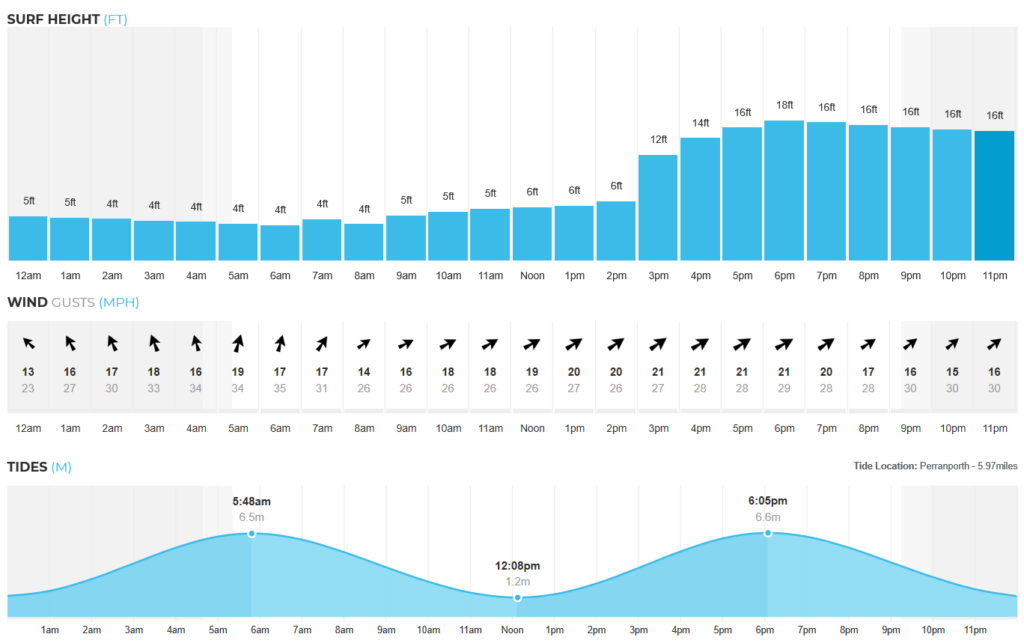
When thinking about safety, the SIZE of the waves is obviously important.
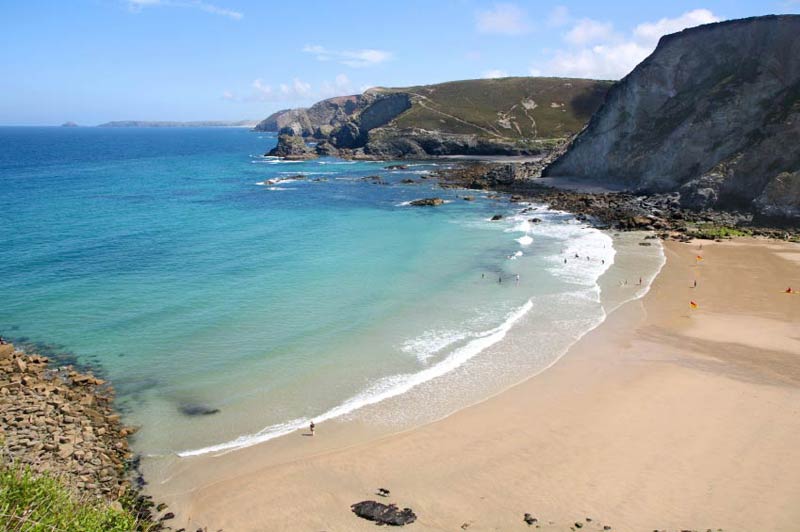
However, the SHAPE of waves can also have a big impact on our safety. The shape of a breaking wave depends on so many factors and in one location on any day we are likely to see many different forms.
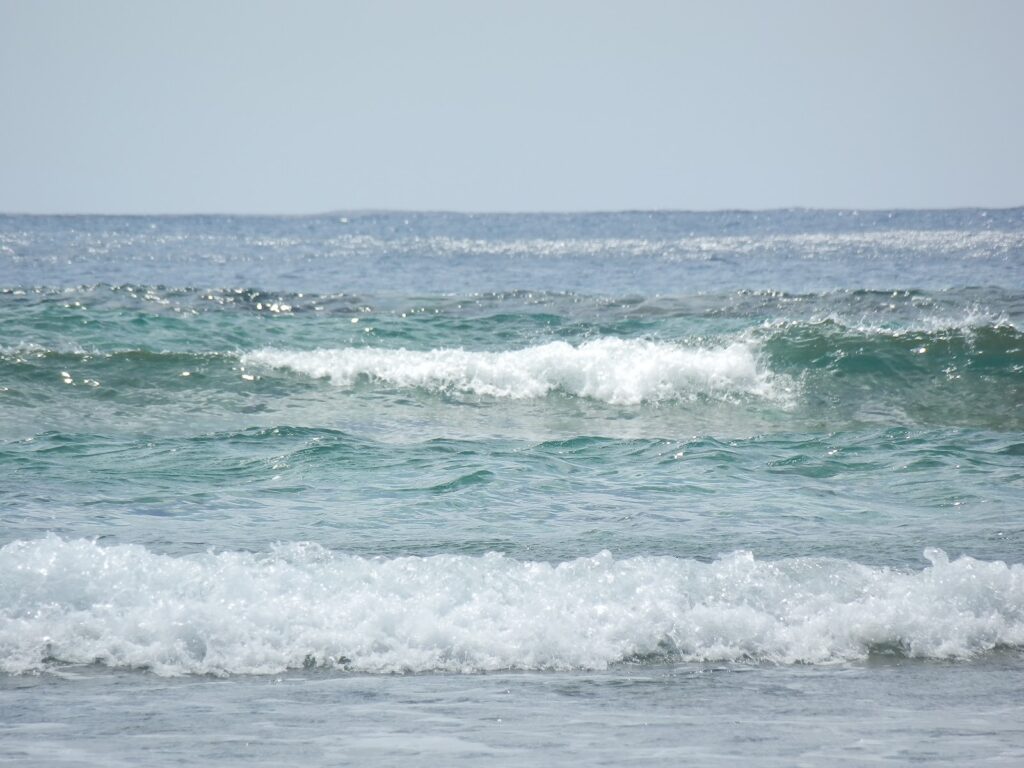
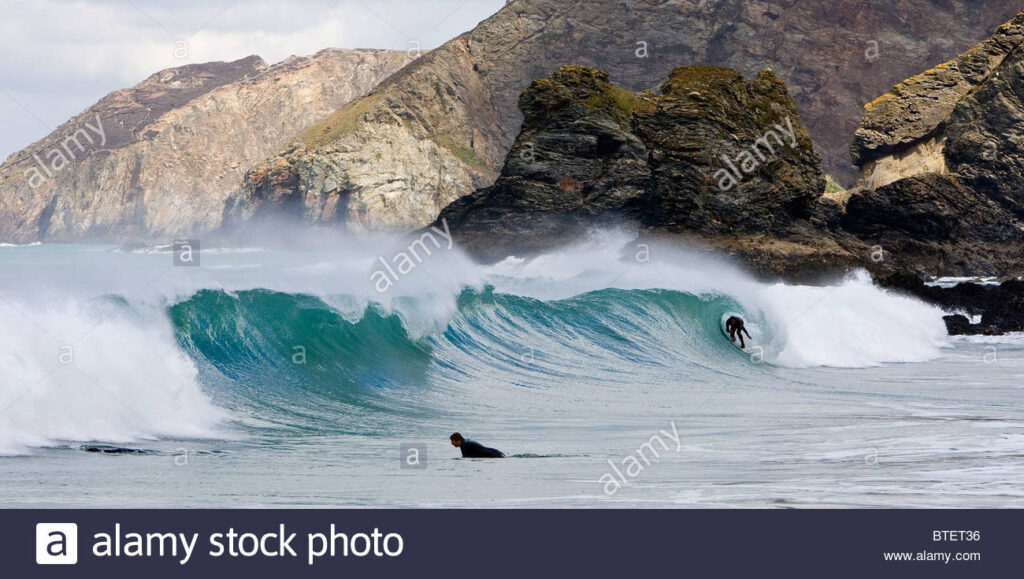
The power of a wave, and the volume of water it moves when breaking are related to both it’s height and period.
In Cornwall most of our good “groundswell” that surfers love has a period of around 10 -14 seconds. Shorter period waves (periods: 7-9s) can be fun but are often described as weak or mushy, below 7 seconds we’d probably call it windswell / chop. In some cases, swell from large Atlantic storms can have a period of 20 seconds – that means if you were sat still in a boat out to sea you’d be going “uphill” on the wave for 10 seconds – just think about how much water is being displaced!
These long period swell can be exceptionally dangerous because:
1. The waves start moving water further out to sea and move a great deal more water up the beach when breaking. This water often returns to sea as rip current. So longer period waves often give rise to stronger rip currents that run further off shore.
2. There are long gaps between sets of waves, even up to 15 minutes in some cases! This can lead to people getting a false impression of the sea state and also makes it easy for less competent surfers to get out back during the long lulls.
3. The sets of waves are often longer, sometimes 10 waves or so. If you get caught out by the first big wave, chances are there’ll be several more behind it to deal with.
4. Sometimes the front slope of the wave breaks down into several smaller waves. However, each of these waves incrementally raises the water level leading to “surges” of water up the beach. Sometimes these surges can move so much water it looks like it’s going from low tide to high tide in a matter of seconds. This surges can do more than overwhelm your wellies – small children and dogs are particularly at risk.
As waves start to break they move water towards the shore. Large or surging waves can move millions of litres of water over tens of metres. When this water flows back out to sea it creates a Rip current.
Sometimes groups of waves “sets” can push increasing amounts of water up the beach which can then rush back out to sea quickly in the next gap between sets “a lull”, creating a sudden “flash” rip.
| Our beaches | Notes |
| Trevaunance Cove | Almost always a rip that runs from the middle of the beach to the harbour on the left and then out to deeper water where it generally dissipates towards the middle of the beach. Can rapidly move people out of their depth or in front of harbour rocks. Sometimes an additional rip on the right which can carry people out and into the Maddocks rocks. |
| Chapel Porth | Very strong currents in all but the calmest conditions. Rips shift daily and with the tide. ALWAYS HIGH RISK but especially on an incoming tide when they can drag swimmers from the bay to the surrounding caves and cliffs. |
| Porthtowan | Similar to Chapel. Often, one particularly nasty one on the right hand side of the bay that tends to drag people North in-front of the rocks. |
| Elsewhere | Learn how to spot a rip and try to find an elevated position to spot them. Locate a landmark on the beach and monitor your position relative to it to ensure you are not drifting. |
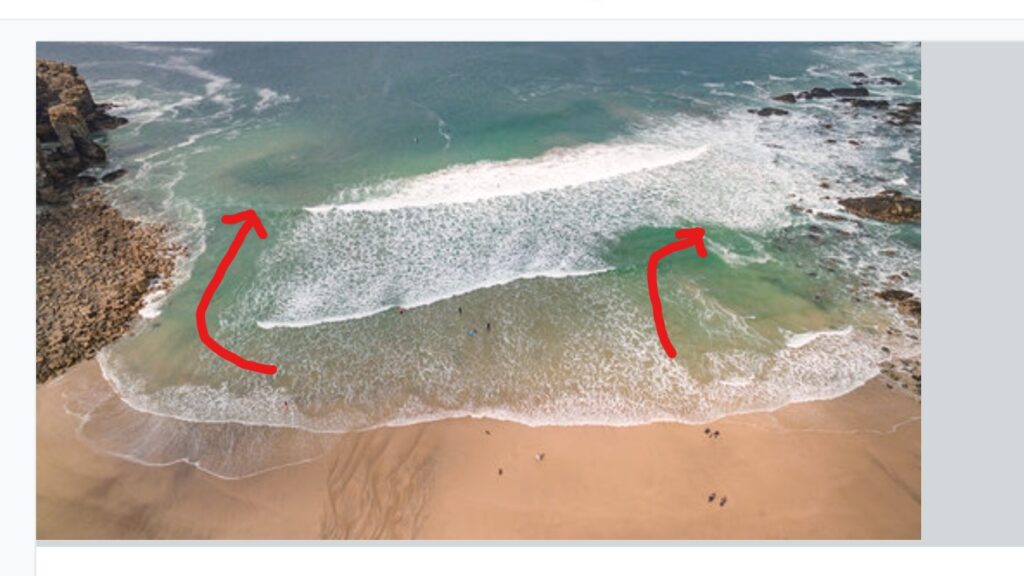
Although once out to sea, most rips will dissipate, they can easily carry people out of their depth or to areas with dangerous waves or rocks.
If you get caught in a rip, it’s important to stay calm and concentrate on floating. Wave for help as soon as you can. Try to swim to the side rather than directly against the current.
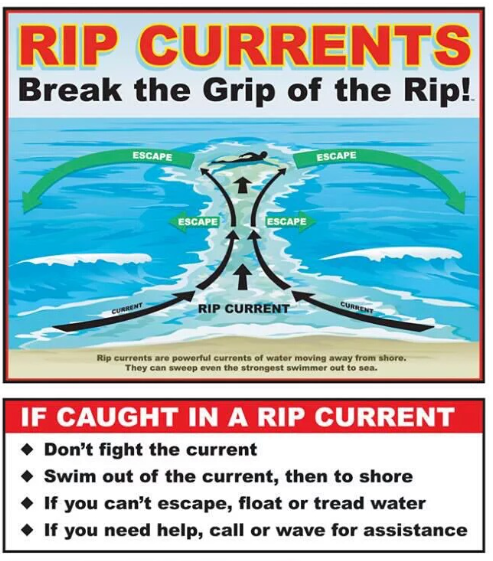
Check the tide, weather and surf forecast. Make sure your kit is fit for purpose. Coastal webcams can be a great way of checking local conditions and, depending on conditions, you may find safer conditions elsewhere.
![]() Don’t run straight in! Take at least 2 minutes to look at the tide, wind, waves and rips. Comparing what you read in the forecast with what you see every time you go to the beach is the best way to develop your beach knowledge.
Don’t run straight in! Take at least 2 minutes to look at the tide, wind, waves and rips. Comparing what you read in the forecast with what you see every time you go to the beach is the best way to develop your beach knowledge.
![]() Don’t put yourself at risk of being cut off or overwhelmed by the tide or surges.
Don’t put yourself at risk of being cut off or overwhelmed by the tide or surges.
![]() Speak to a lifeguard.
Speak to a lifeguard.
![]() In an emergency dial 999 and ask for the coastguard.
In an emergency dial 999 and ask for the coastguard.
Be confident to intervene if you see someone behaving in a way you know puts themselves or others at risk, most people are very receptive to polite advice.
If someone is in trouble, make sure help is on the way before considering attempting a rescue yourself.
If your surfing and see someone in trouble, consider using your board to help them stay afloat. But be careful, a panicking person can be a danger to you. Stay clear, pass them your board and let them calm down before you get too close. Keep your board between you and them.
If you have any other help or advice you think might help keep others safe at the beach, please get in touch.
If you’d like to develop your beach safety knowledge to the next level, please enrol for our FREE Coastal Surveillance course.